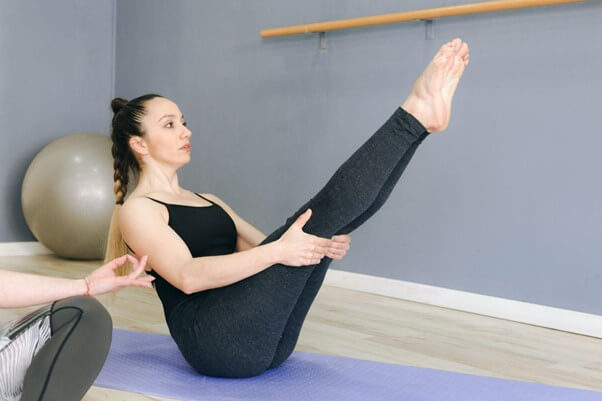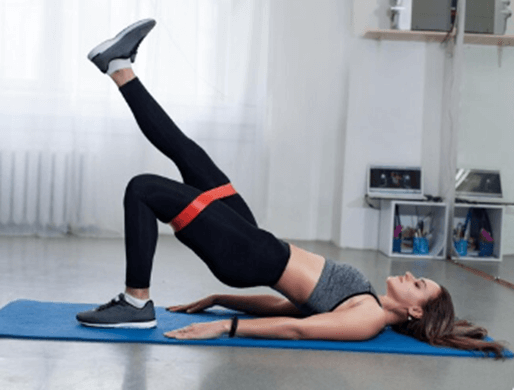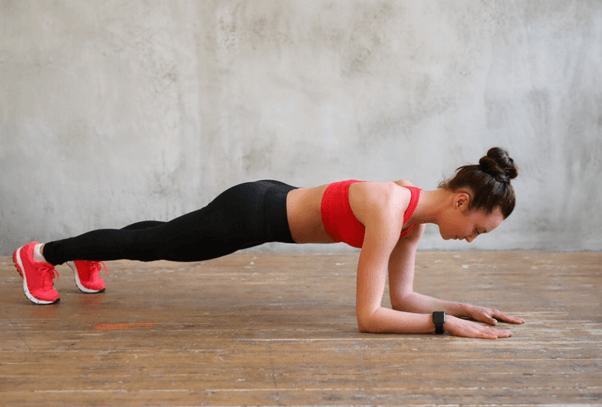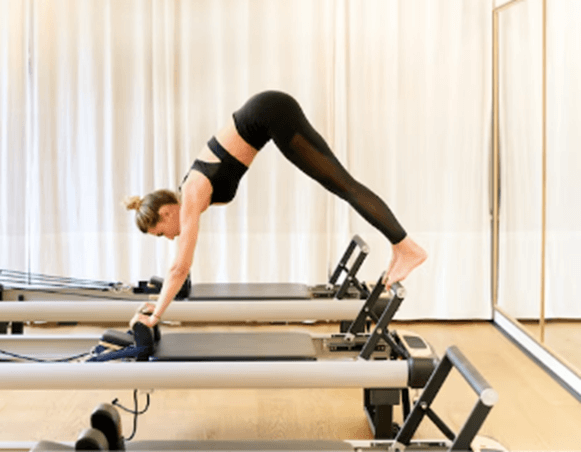Introduction to Pilates for Movement Disorders
Pilates for core strengthening in movement disorders is a versatile and effective exercise method that can benefit people with movement disorders, such as Parkinson’s disease, multiple sclerosis, and cerebral palsy. In this blog, we will explore the importance of core strength in managing movement disorders and how Pilates can play a crucial role in improving the quality of life for individuals dealing with these conditions.
Importance of Core Strength in Movement Disorders
One of the key aspects of managing movement disorders is building and maintaining core strength in movement disorders. The core muscles in our body, which include the muscles in our abdomen, lower back, and pelvis, provide essential support to our spine and help us maintain balance and stability.
When these core muscles are weak, individuals with movement disorders may experience a range of challenges. These can include difficulty in walking, maintaining proper posture, and performing daily activities. Therefore, strengthening the core becomes a vital component of managing these conditions effectively.
How Weak Core Muscles Affect Movement
As per the best movement disorder clinic in Mumbai, Weak core muscles can negatively impact a person’s ability to move and function. Here are a few ways that this could occur:
-
Posture Problems:
Weak core muscles can lead to poor posture, making it harder for individuals to stand or sit up straight. This can result in discomfort and may worsen their movement disorder symptoms.
-
Balance Issues:
The core muscles are responsible for stabilizing the body, helping us maintain balance while moving. When these muscles are weak, balance problems become more prevalent.
-
Coordination Challenges:
Coordinating movements can be difficult when the core is weak. This affects not only daily activities but also tasks like walking and reaching for objects.
Now, let’s delve into how core-strengthening exercises for movement disorder patients can help address these issues and provide numerous benefits for people with movement disorders.
Benefits of Pilates for Movement Disorders
Pilates is great for people with movement disorders. It helps make core muscles stronger, which means better posture, balance, and coordination. This can reduce discomfort and improve mobility. Benefits of pilates for movement disorder management can be adjusted to each person’s needs and works well with other treatments and medications, making it a useful part of managing movement disorders and making life better for those with these conditions.
Targeted Core Engagement
Targeted core engagement” in pilates for movement disorders means focusing on and working specifically on the muscles in your core, such as your abdomen, lower back, and pelvis. Pilates exercises are designed to make these core muscles stronger and more stable. By concentrating on these muscle groups, you can improve your posture, balance, and control of your movements. This focused approach enhances the effectiveness of Pilates in building core strength and overall body stability, which is beneficial for people with various fitness levels and conditions.
Improved Posture and Balance
One of the primary goals of pilates for movement disorders is to promote proper posture and alignment. Through regular practice, individuals can develop better awareness of their body’s position and make necessary adjustments to maintain good posture. This is particularly beneficial for those with movement disorders, as it can alleviate discomfort and improve overall mobility.
Enhanced Coordination and Stability
“Improved stability and coordination” describes your increased capacity to regulate your body’s movement disorder management and preserve equilibrium.In Pilates, specific exercises challenge your coordination and stability, making you more adept at controlling your body. This is beneficial for everyday activities and sports. By practicing Pilates regularly, you develop better control over your movements, resulting in increased stability, better balance, and a decreased risk of falls or injuries.
Key Pilates Exercises for Core Strengthening in Movement Disorders
Let’s take a closer look at some key Pilates exercises suggested by the experts at our movement disorder clinic in Mumbai, that are particularly effective for strengthening the core muscles in the context of movement disorder management:
The Hundred
In Pilates, “The Hundred” entails reclining on your back, lifting your head and shoulders, and continuously raising and lowering your arms while using your core muscles. This exercise targets your abdominal muscles, contributing to a stronger core. A strong core can improve your posture, enhance balance, and boost overall stability. This exercise is valuable for individuals with various fitness levels and can be adapted to suit different needs and abilities.
Leg Circles
A Pilates practise called “Leg Circles” involves lying on your back and raising one leg into the air. You then move that leg in a circular motion. This exercise focuses on your lower belly muscles and helps improve your hip flexibility. It’s also good for practicing coordination and balance. By doing leg circles, you can become more skilled at controlling your body’s movements and feel more stable during activities. It’s a beneficial exercise, especially for people with different fitness levels and needs.
Plank Variations
Plank variations in Pilates are exercises that involve holding your body in a straight line, like a push-up position. These exercises help strengthen your core muscles, including your belly and back. They come in different forms, like side planks and forearm planks, which can be adapted to your fitness level. Plank variations are excellent for building overall body stability and can improve your balance and posture. Regular practice of these exercises can make daily movements easier and enhance your strength and coordination, which is valuable for people with varying fitness needs.
Pilates Roll-Up
The Pilates Roll-Up is an exercise where you start by sitting on the floor with your legs straight. You slowly roll your spine down, reaching for your toes, and then roll back up. This exercise is fantastic for enhancing your core strength, flexibility, and body control. It helps make your belly and back muscles stronger and can improve your posture. Pilates Roll-Up is a valuable exercise for people with different fitness levels and needs, and it can make daily movements more comfortable and efficient while supporting better overall body stability.
Safety Considerations and Modifications
For safe and effective Pilates practice, especially if you have movement disorders or specific needs, our movement disorders doctors in Mumbai suggest itt’s essential to work with an experienced instructor. They can customize the exercises to fit your unique requirements and ensure your safety. Using props like stability balls or resistance bands can provide additional support and make the exercises more accessible. These safety considerations and modifications ensure that Pilates is a valuable and safe addition to your fitness routine, helping you improve your core strength and overall well-being while accommodating your specific circumstances.
Adapting Pilates for Movement Disorders
Adopting a collaborative approach in movement disorder care means changing the exercises to fit each person’s needs. A skilled instructor can adjust the routines to work for people with limited mobility or weak muscles. This way, individuals with movement disorders can safely do Pilates, getting stronger and improving their posture and balance without any problems. Adapting Pilates to their specific situation makes it a comfortable and beneficial exercise for them.
Using Props for Support and Balance
Using props for support and balance in Pilates means using things like balls, bands, or foam rollers to help you stay steady during exercises. These props are handy, especially for people with movement disorders or those who need extra help. They make the exercises safer and easier, ensuring a good Pilates practice. By using these aids, you can work your core muscles, improve your well-being, and enjoy the benefits of Pilates without worrying about balance issues.
Combining Pilates with Other Therapies
The doctors who provide movement disorders treatment in Mumbai at our hospital suggest combining Pilates with other therapies, which means doing Pilates exercises along with other treatments like physical therapy or taking medication. Doing this can make both the therapy and Pilates more effective. It’s like using different tools to get better results in managing health conditions. This approach can improve your overall well-being and quality of life, addressing your specific needs and health conditions more effectively.
Synergies with Physical and Occupational Therapy
Pilates can complement physical and occupational therapy sessions by reinforcing the exercises and techniques learned in these therapies. The core strength developed through Pilates can enhance the progress made during physical therapy and improve functionality in daily life.
Coordination with Medication Management
Coordinating with medication management is about making sure the medicines you take work well with the other things you do for your health. You work with your healthcare provider to make sure your medications go along with your exercises or therapies. It’s like making all the parts of your health plan work together smoothly for the best results.
In conclusion, Pilates is a powerful and adaptable method for strengthening the core muscles in individuals with movement disorders. Building and maintaining core strength can significantly improve posture, balance, and coordination while alleviating discomfort and challenges associated with these conditions.
Dive into the world of movement disorders, exploring types, causes, and symptoms in our blog post: Exploring Movement Disorders: Types, Causes, and Symptoms
By focusing on targeted core engagement and incorporating key Pilates exercises, individuals can enhance their quality of life and improve their overall movement abilities. It’s essential to work with knowledgeable instructors and consider safety modifications when integrating Pilates into your routine. Additionally, the combination of Pilates with other therapies and medication management by our movement disorder specialist doctors in Mumbai can provide a holistic approach to managing movement disorders, leading to a better and more active life for those affected by these conditions.









